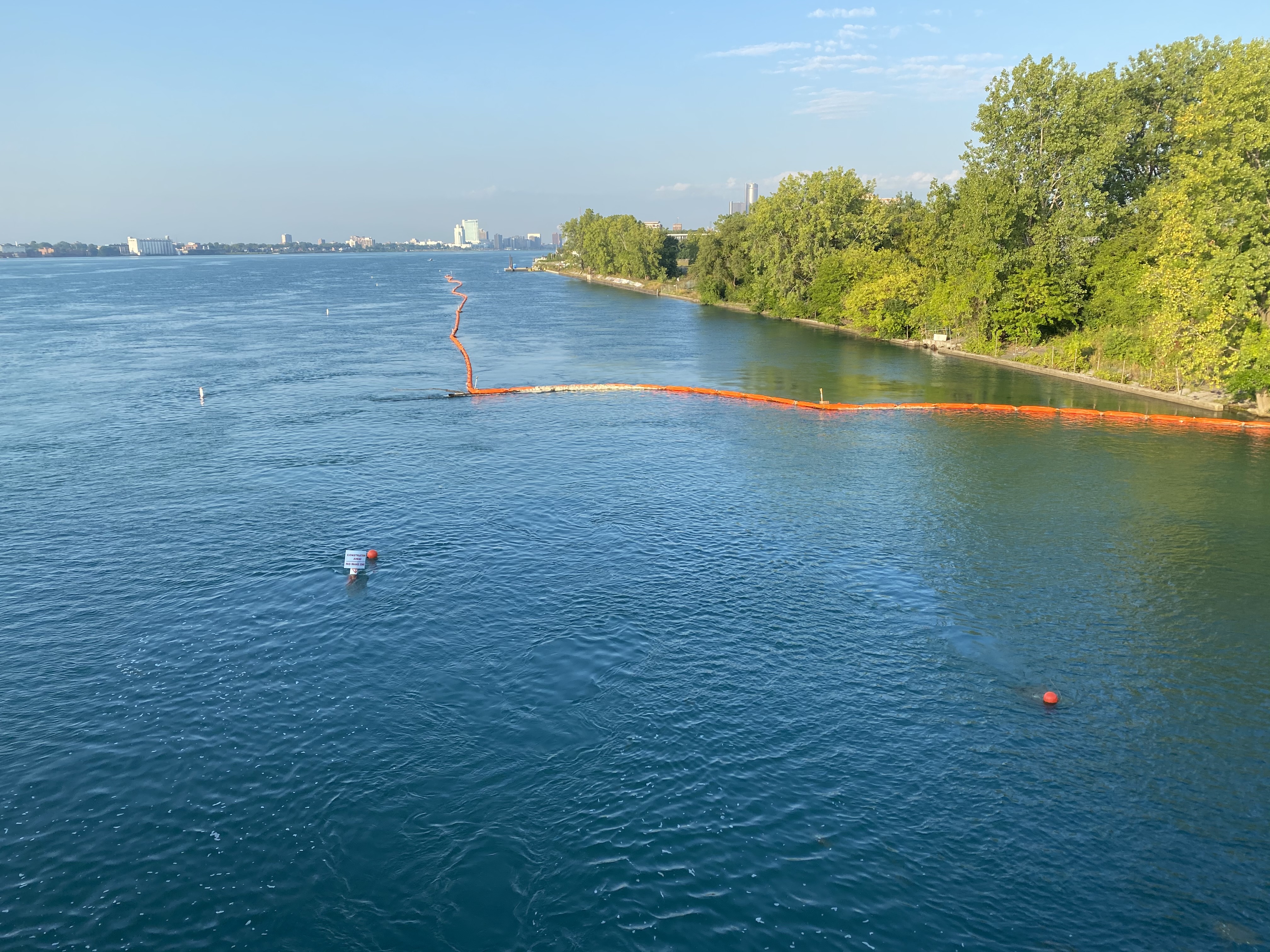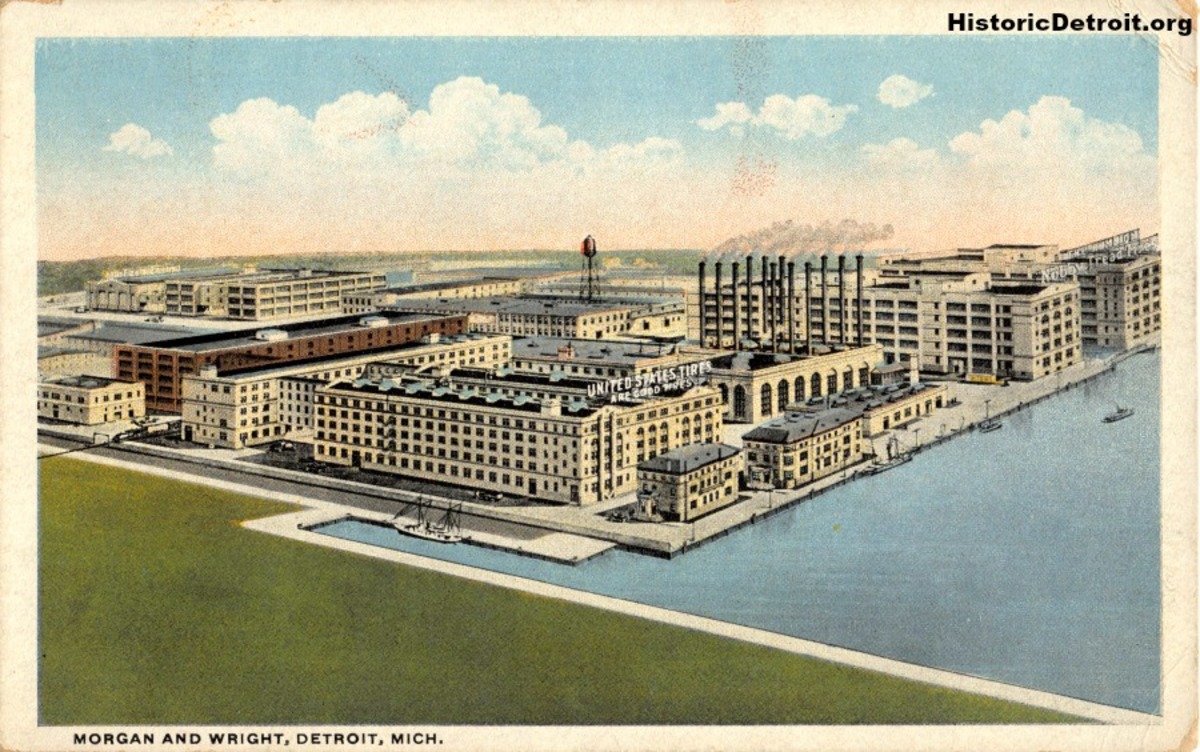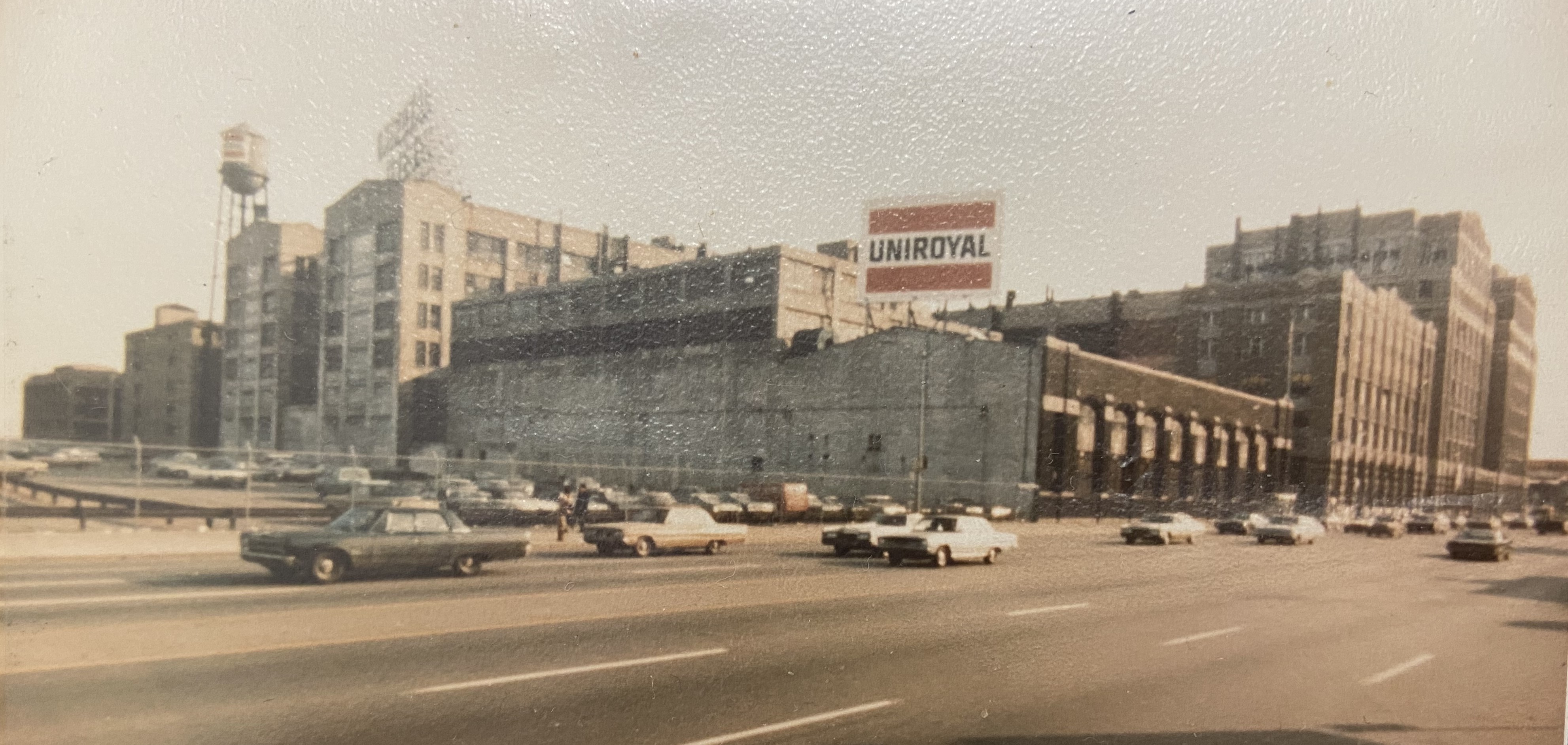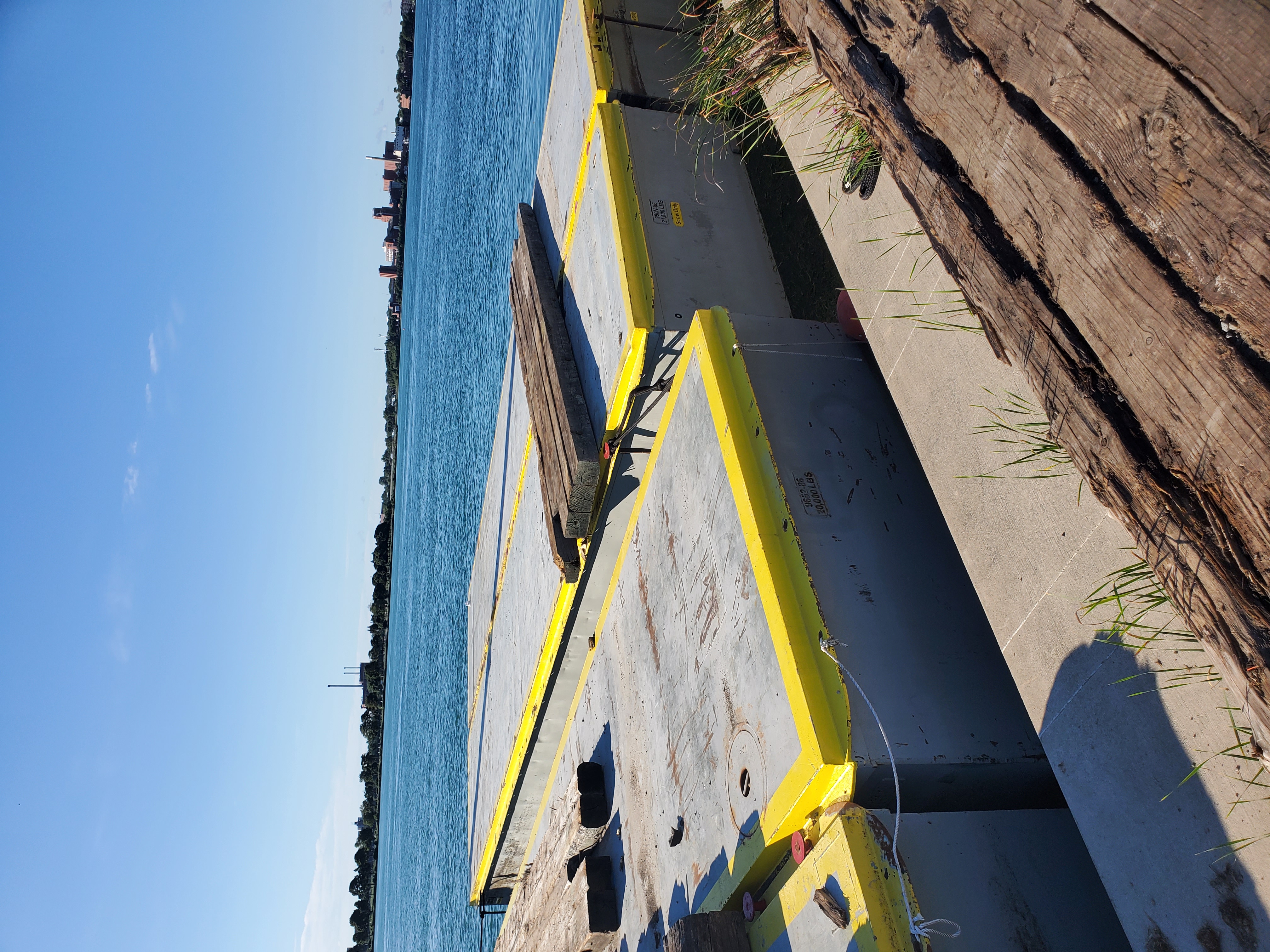
Great Lakes Moment is a monthly column written by Great Lakes Now Contributor John Hartig. Publishing the author’s views and assertions does not represent endorsement by Great Lakes Now or Detroit Public Television.
Forty years after Uniroyal shut down in Detroit, contaminated sediment cleanup is starting in the Detroit River off this former industrial site.
This cleanup makes way for completing the Detroit RiverWalk extension between Mt. Elliott Park and Gabriel Richard Park, and the East Riverfront portion of the Detroit RiverWalk to the crown jewel of Detroit parks – Belle Isle.
It has been a long and arduous process of razing the old industrial buildings, cleaning up contaminated brownfield lands and now remediating the contaminated sediments in the Detroit River. It is one of the most valuable development parcels in Detroit, with approximately 2,000 feet of riverfront, compelling views of Belle Isle and the Detroit River, and soon the Detroit RiverWalk, greenspace and parkland.
The old Uniroyal site has an over 150-year history of industrial operations, including stove making, bicycle and automobile tire manufacturing, motor car manufacturing, and a coal gasification plant. Long before Detroit became known for automobile manufacturing, it was well known for stove making. Detroit Stove Works was the first industry to occupy the old Uniroyal site in 1866. Soon, stove making became Detroit’s leading industry.

Morgan and Wright Bicycle Company/U.S. Tire, Detroit, circa early 1900s (Photo courtesy of Historic Detroit)
In 1905, Morgan & Wright began manufacturing bicycle tires at this location, but it would soon grow into one of the largest automobile tiremakers in the world – Uniroyal. During the Arsenal of Democracy years, 10,000 workers produced 60,000 tires per day.
By the 1970s, Uniroyal was struggling and eventually ceased operations in Detroit in January 1980. The piecemeal expansion that had taken place over several decades contributed to the decision to shutter the Jefferson Avenue plant.

Uniroyal Tire Company, Detroit, circa 1970s (Photo courtesy of Historic Detroit)
In 1981 the city of Detroit bought the Uniroyal plant for $5 million. Four years later the plant buildings were demolished at a cost of $3.6 million, opening a vast stretch of attractive waterfront property that came with a hitch – the site was contaminated with legacy pollutants left over from tire production and other industries. Urban planners call such sites brownfields because they are abandoned industrial properties where the land is contaminated with hazardous substances.
Starting in the mid-1980s, several plans and attempts to redevelop the site were stymied by massive brownfield cleanup costs.
In 2006, the Michigan Department of Environmental Quality assigned the cost of the cleanup of the western portion of the site to Michelin, DTE, DuPont and Enodis. A consent decree followed, resulting in a $33.5 million cleanup of 15 of the 43 acres.
Brownfield cleanup included excavating and removal of 400,000 tons of contaminated material, installing a breakwater or seawall along 700 feet of shoreline, backfilling and restoring the site to previous grade, and planting restored area with native plant seed mix. Cleanup of the 15 acres was completed in 2012. Additional cleanup will be required once a developer is secured. Detroit Economic Growth Corporation is now working to secure a developer of the upland portion along Jefferson Avenue.
Construction of the Detroit RiverWalk at Uniroyal has been thwarted by the contaminated brownfield land and, most recently, contaminated sediments in the Detroit River. The contaminated river sediment obstacle was removed when the U.S. Environmental Protection Agency signed a $2.9 million agreement with the Detroit Riverfront Conservancy to remediate approximately one acre of contaminated sediment located along the shoreline of the Detroit River downstream of the MacArthur Bridge to Belle Isle.

Barges staged at the former Uniroyal site for sediment remediation in the Detroit River, August 2020. (Photo credit: Detroit Riverfront Conservancy)
The EPA will isolate and stabilize the contaminated sediment with an “environmental cap” of clean material that includes carbon and sand placed on top of it. The Detroit Riverfront Conservancy will then cover the cap with stone riprap to stabilize the cap and the seawall and provide support for the Riverwalk. Through the agreement, 65% of the $2.9 million cost will come from the Great Lakes Legacy Act administered by EPA and the remaining 35% will come from the Conservancy.
“Partnerships are critical to the success of the GLRI,” said EPA Great Lakes National Program Office Director Chris Korleski. “EPA and the Detroit Riverfront Conservancy are working better together to transform the Detroit riverfront and advance the cleanup of the Detroit River Area of Concern.”
Construction is now underway and projected to completed later this fall.
This project is part of the larger effort to restore and protect the Great Lakes through the Great Lakes Restoration Initiative. Cleanup of pollution hotspots or Great Lakes Areas of Concern is a top priority and Detroit River is one of 43 such sites.
“We are tremendously grateful for the leadership of the EPA on this important project,” said Mark Wallace, president and CEO of the Detroit Riverfront Conservancy. “When this new stretch of Riverwalk is complete, it will fulfill our vision of 3.5 miles of Riverwalk along the East Riverfront and it will provide a direct connection from the Riverwalk to Belle Isle.”
This project is also important because it serves as a model of collaborative funding to clean up contaminated sediments and helps raise awareness of this important work. The Great Lakes Legacy Act provides 65% of the cost of sediment remediation and requires 35% from a non-federal partner. Recently, the EPA and the Michigan Department of Environment, Great Lakes, and Energy identified 6.7 million cubic yards of contaminated sediment that require remediation at nine locations along the U.S. shoreline of the Detroit River to restore beneficial use impairments. The EPA and EGLE are now identifying and seeking other partners to undertake remediation of remaining contaminated sediments in the Detroit River, like this Uniroyal project.
Read more Great Lakes Moments on Great Lakes Now:
Great Lakes Moment: A tribute to Guy O. Williams, environmental justice champion
Great Lakes Moment: Warmer, wetter, wilder
Roller Coaster: Michigan’s long history with environmental contamination
Great Lakes Moment: Investing in pollution prevention and restoration pays off
Great Lakes Moment: River otters return to western Lake Erie
Great Lakes Now Contributor John Hartig is a board member at the Detroit Riverfront Conservancy. He serves as the Great Lakes Science-Policy Advisor for the International Association for Great Lakes Research and has written numerous books and publications on the environment and the Great Lakes. Hartig also helped create the Detroit River International Refuge, where he worked as the refuge manager until his retirement.
Featured image: A silt screen curtain was placed in the Detroit River off the former Uniroyal site to contain sediments resuspended during sediment remediation. (Photo credit: Detroit Riverfront Conservancy)
1 Comment
-
John: I hope you are taking an active role in preventing the McCloth Steel property from being re-zoned to Industrial Riverfront by Crown Enterprises.(Matty’s group). The old adage,” An ounce of prevention is worth a pound of cure” have never been more true than in this situation.
Mac McAdam




